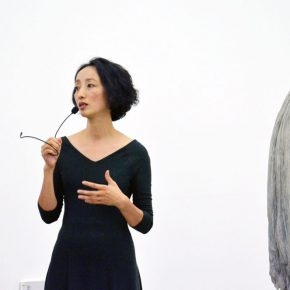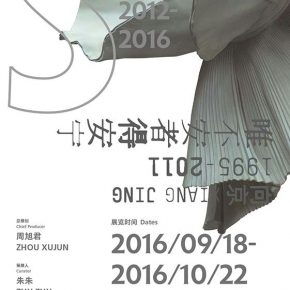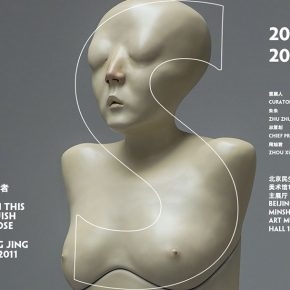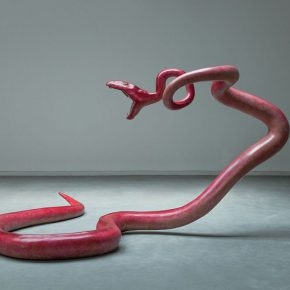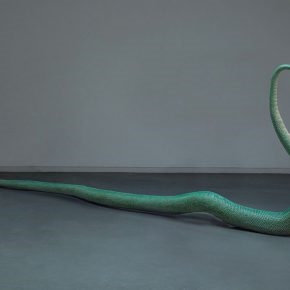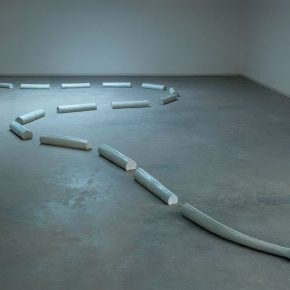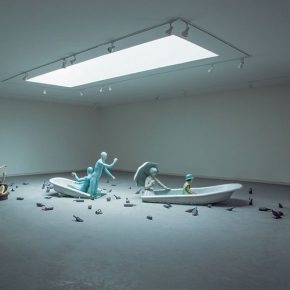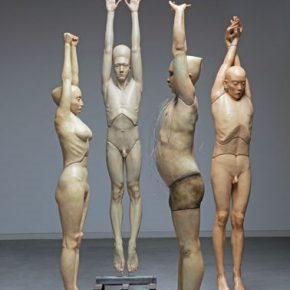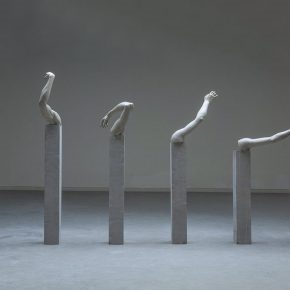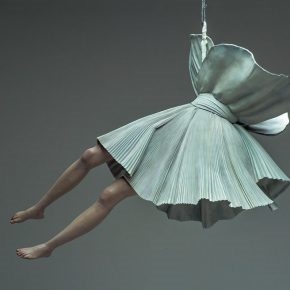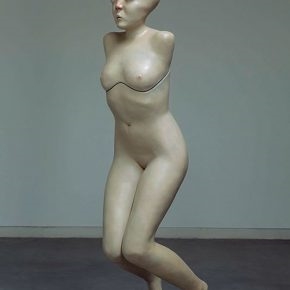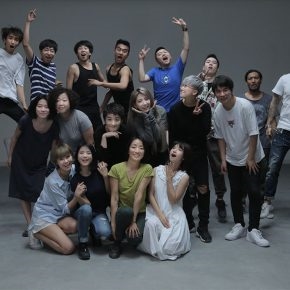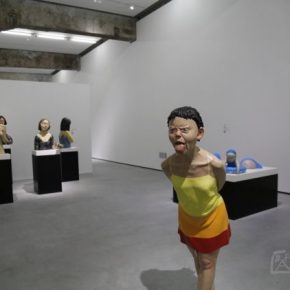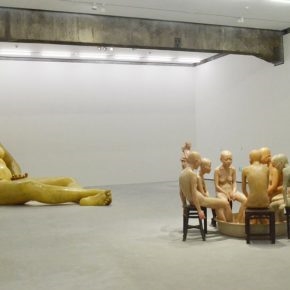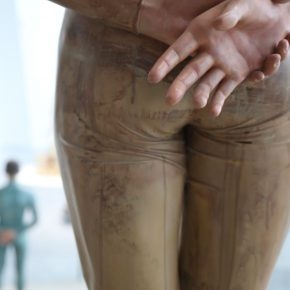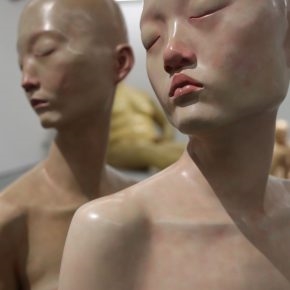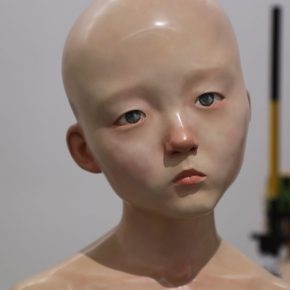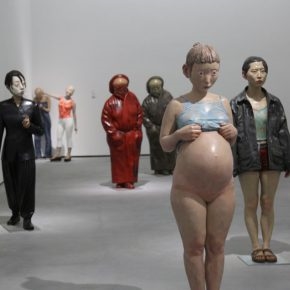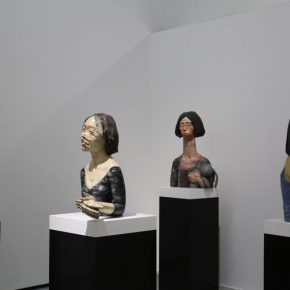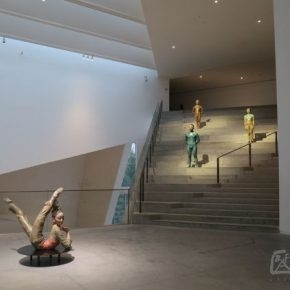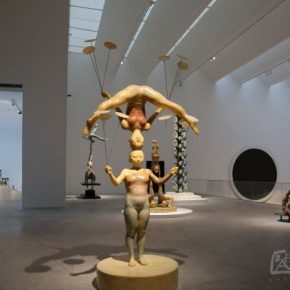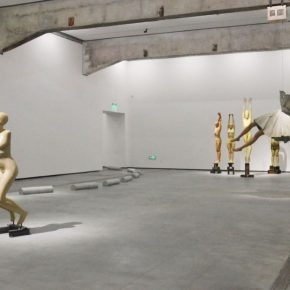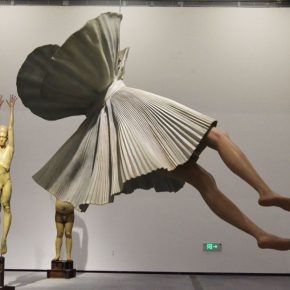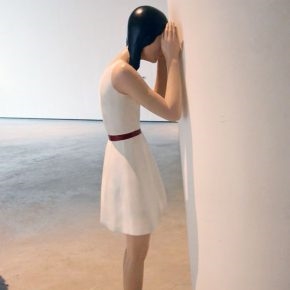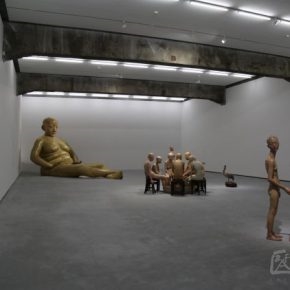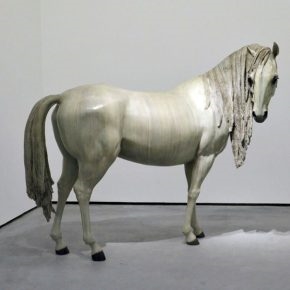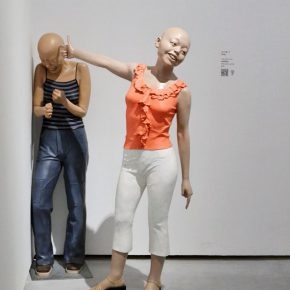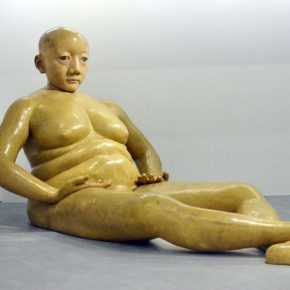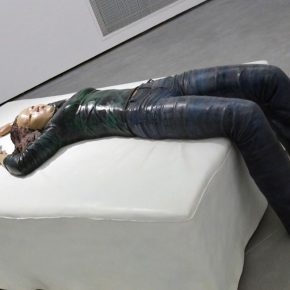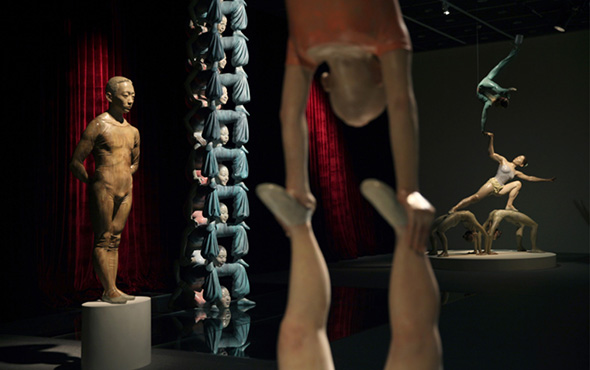
“For me, the anguish is like fate, everything often happens because of anguish.” said by Xiang Jing. At 16:30 on September 18, 2016, Xiang Jing’s Retrospective – “Upon This Anguish I Repose” + New Works – “S” opened in Beijing Minsheng Art Museum. The exhibition was curated by the famous critic Zhu Zhu, and it is the first large-scale solo exhibition which comprehensively reviews the 16-year creative career of the artist before 2011, in addition, it also includes the latest works of her art created in the past five years.
As one of the most important contemporary artists in China, Xiang Jing’s 21-year creative development can be considered as an unique dimension to view the changes in contemporary Chinese art. The exhibition presents 6 series including “Mirror Image” (1999-2002), “Keep in Silence” (2003-2005), “Naked Beyond Skin” (2006-2008), “Will Things Ever Get Better?” (2009-2011), “I Have Seen Happiness”(2002—2010), and the latest creation “S” series(2012—2016). We can say that the artist’s discussion on the current predicament of humanity and possible outlets is the main clue continuously running through the works.
“Mirror Image” Series: Xiang Jing’s Works 1999-2002 bring her life-size works together for the first time. With their characteristically rich countenances, works in “Mirror Image” pay attention to the conflict enacted against the external world by the individual. The prominence of agony and the transformative process of puberty found in this body of work are supported not only by the artist’s personal experience; it has always been Xiang Jing’s preferred issue to investigate “existence”. In this body of work, Xiang Jing explicitly rejects realism and returns to an internalized artistic expression. The personalized fashion that is characteristic of Xiang Jing’s works serves to lay emphasis on the subjectivity of one’s worldview: on the one hand, objects that appear in the reflection from a mirror are not the true objects themselves; on the other hand, “mirror image” is, undoubtedly, also a symbol of Xiang Jing’s self-reflection during this period.
The title of “The Woman in the Mirror” in a most accurately way, touches upon the “Mirror Image” topic, where a mirror functions to reflect the reality, but also serves as a metaphor for self-introspection. Xiang Jing obviously is more intrigued by the latter. In Xiang Jing’s common practice, the appearance of making busts often suggests the beginning of an experiment. In these busts of The Woman in the Mirror, the immature point of view of a child often found in works in “Mirror Image” series has disappeared. Instead, trails of several practices found in Xiang Jing’s later oeuvre emerged.
“Keep in Silence” (2003-2005) borrows Ludwig Wittgenstein’s famous quote, “Wovon man nicht sprechen kann, darüber muss man schweigen (Whereof one cannot speak, thereof one must be silent).” Phenomena can be spoken of, but true essence exists in an unspeakable manner. “Keep in Silence” touches upon a complex set of subjects and issues and experiments with a number of sculpting languages in “Keep in Silence”. “The Virgin Series” and the “Body Series” within “Keep in Silence” are first attempts at addressing identity-related problems for Xiang Jing and serve as preliminary trials for many of her later works.
“Virgin in White” (2002) belongs to the “Virgin” subseries of Xiang Jing’s series “Keep in Silence.” If Xiang Jing’s inner self grew to maturity along with her oeuvre, then “Virgin in White”, along with “Bang!”, which were completed during the same period, are the first works in which Xiang Jing revealed her authentic self. In terms of life stages, “virginity” is an un-gendered, unsocialized, highly self-contained state. Such is the condition of the Virgin in White; there is nothing oppositional about her, and she hasn’t been in a relationship with anyone – her gaze is focused only on herself.
In many interviews, Xiang Jing has often raised the idea of the “old soul.” An “old soul” is not the same as an “old body.” Rather, the concept is akin to that found in Plato’s creation myth, in which there are souls living in the present who carry with them memories of past lives. These “old souls” apply their accumulated knowledge to their understanding of themselves, the world and of others and they go out into to the world with many tales to tell, which is reflected in the work “Secret” themed on the elderly.
“Your Body”, created and completed by Xiang Jing in 2006, is part of the “Keep in Silence” series. Xiang Jing’s initial impulse in this work was to try to use her own perceptions and intuitions to resist the methodology that privileges text, to push against established mechanisms for explicating art, and to refute the conceptual approach to artistic creation that makes exhibitions the primary purpose of art making.
In “Naked Beyond Skin” Series (2006-2008), Xiang Jing endeavors to reveal the truth beneath the skin. This most condensed and thorough phase of works studies human nature as well as the relationship between the individual and others, with an emphasis on subjectivity. Xiang Jing offers an analysis of “woman” and “the body” in a mature and incisive fashion. “Naked Beyond Skin” transcends “gender” with a mono-sexual collection of works.
In “Are A Hundred Playing You? Or Only One?”, Xiang Jing attempts to convey the heartwarming dynamics between people with a preliminary probing into the “relationships” between people, as well as between people and the world. After completion, Xiang Jing realized that this piece, made up of human figures sitting around a circle, also happens to be a closed system with closure, it is a circle. The introduction of the pelican undoubtedly broke the closure of the work: the pelican represents the viewer’s perspective, while also echoing the strength of female, feminine and watery powers.
Even though the introduction of relationships in works with multiple figures has penetrated the dimension of self in the individual narratives of Xiang Jing’s previous works, she remains steadfast in the awareness of questioning in works such as “The Open” and “Rainbow”, and extends the reflection on the nature of the human to a broader dimension. As such, Are A Hundred Playing You? Or Only One? concludes the series “Naked Beyond Skin”, and serves as the “pithy sayings” of the series.
In “Will Things Ever Get Better?” series (2009-2011), the artist is through The Acrobat Series and the Animal Series probing into the “predicament” confronted by our humanity. The Acrobat Series is a metaphor for people’s social character – each of us is required to play our own role, as our condition is given in terms of relationships within a power structure. The Animal Series, on the other hand, is a metaphor for people’s natural character – the instinctive and caring side of human nature. In other words, the Acrobat Series is a metaphor for the social and exterior façade of human nature; and the Animal Series is a metaphor for the internal aspect of human nature that is masked by our social identity – true redemption of human nature lies therein.
One of the highlights of the exhibition is the new works “S” series which were created after the artist’s being dormant for 5-years. In the “S”, it still continues as the core problem, that is humanity which she has been keen on. Xiang Jing will introduce discussions on many propositions such as “the sex without an object”, “the power represses the mechanisms of pleasure”, depression, reflection and restructuring of memory, at the same time, through figurative suicide to weaken and offset “the lyrical composition”, gradually collapsing the literalized structure and then relying on a simple shape to interpret feelings and thoughts, from the narrative to the figurative that are involved in the abstract.
For the exhibition of new works, Zhu Zhu said that, “S is a quality one can take in at a glance. It is a line, a pose, a counter-stroke, and a spatial form. More importantly, it is a mobile structure for the ascent of representation towards abstraction, similar to the ascension of a spiral. It is a way of accentuating the vertical relation of the ground to the sky, along with the spasmodic state of life that is situated between the two. The remaining themes are ancillary to this.”
It is worth mentioning that, in order to fit the theme of the exhibition “Upon This Anguish I Repose”, Xiang Jing presents an artistic short film about “problem” on the 3th floor, which is jointly launched by Xiang Jing and EE Media “tmrw.prty”Special Project, after the tmrw.prty was established 3 years ago, it once again presents an unusual planning for all walks of life.
The exhibition continues to October 22.
Text by Lin Jiabin, translated by Chen Peihua and edited by Sue/CAFA ART INFO
Photo by Lin Jiabin and Beijing Minsheng Art Museum


